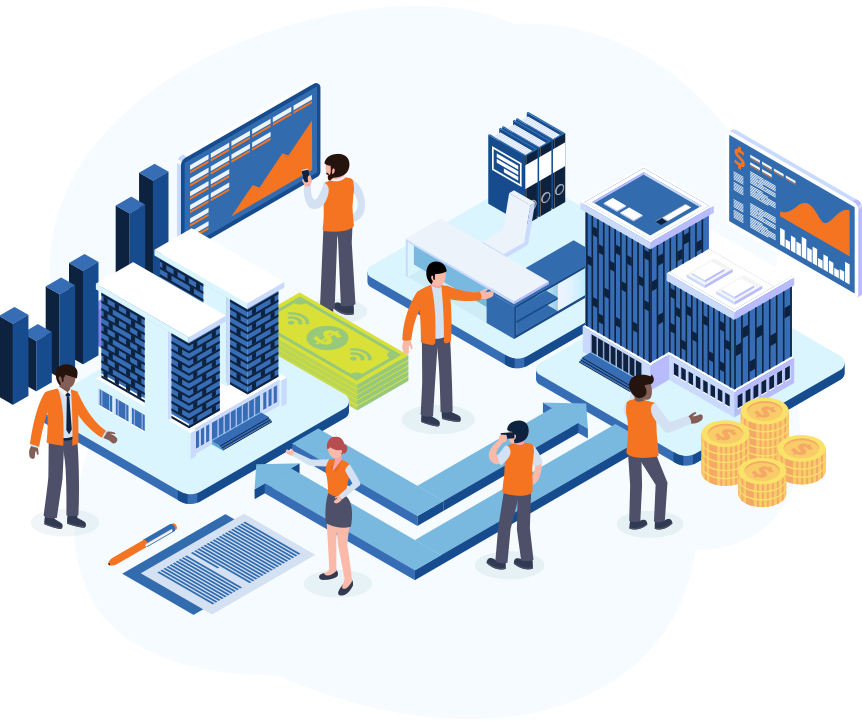RPA For Data Collection and Analytics

In the digital age, quality data is every organization’s most precious asset, as it gives you invaluable insight into your business and enables you to identify trends and make strategic decisions in order to reach your goals and targets.
For instance, according to a McKinsey Analytics survey, 50% of business respondents indicated that Big Data has fundamentally changed business practices in their sales and marketing functions for the better.
While most organizations have no shortage of data at their disposal, actually accessing this data, compiling it into reports, and analyzing it often becomes a challenge.
Why Automate?
These challenges usually arise when data collection and analysis are performed manually by human staff. Why? It is incredibly difficult to sift through large amounts of data and analyze the findings when this data is in multiple formats and saved across many different locations by different members of your staff. As a result, crucial data and insights often fail to trickle down to a company’s decision-makers, and are essentially wasted.
Robotic Process Automation offers a solution to this common challenge and can help your business streamline its processes, reduce errors, improve employee productivity, and free up valuable time for higher-value tasks.

These challenges usually arise when data collection and analysis are performed manually by human staff. Why? It is incredibly difficult to sift through large amounts of data and analyze the findings when this data is in multiple formats and saved across many different locations by different members of your staff. As a result, crucial data and insights often fail to trickle down to a company’s decision-makers, and are essentially wasted.
Robotic Process Automation offers a solution to this common challenge and can help your business streamline its processes, reduce errors, improve employee productivity, and free up valuable time for higher-value tasks.
What is RPA?
RPA uses software that has been programmed to carry out repetitive, everyday business processes that would otherwise be performed by a human.
RPA bots can take care of almost any repetitive, mundane, time-consuming business task. As a result, you can shift your focus towards higher-value tasks.
How it is Used to Gather and Analyze Data
![]()
RPA uses software that has been programmed to carry out repetitive, everyday business processes that would otherwise be performed by a human. RPA bots can take care of almost any repetitive, mundane, time-consuming business task. As a result, you can shift your focus towards higher-value tasks.
More specifically, RPA helps automate the following tasks:
- Data collection
- Data entry
- Data verification
- Data management and sorting
- Data analytics
- Data cleansing
Here is an example of how this would apply to eCommerce retailers:
Data is collected by RPA bots through customers’ online touch-points, including buying habits and how much money is being spent. RPA can then be used to link data sources, build reports, analyze the data, and compare it to the store’s product inventory to aid their sales and marketing teams.

What are the Benefits of Using RPA for…
![]()
Data Collection & Entry?
- Produce more accurate reports
- Have more time for higher-value tasks
- Reduce the risk of human error
- Access data that is more organized and accessible, and easier to understand
Data Analytics?
- Sort through data sets
- Set parameters
- Produce accurate reports from your data
- Forecast future user behaviour
- Run simulation programs

This gives you a clear snapshot of your organizational structure and workflows, so you can identify what’s working and what isn’t. With these crucial insights, you’ll be empowered to identify areas for improvement within your organization and make important changes to the business structure along with internal processes.
Further benefits of RPA include:
- Determine important insights at a much more rapid rate
- Gain insight into what is and isn’t working for your business and your customers
- Gain more accurate findings and reduce the risk of inaccurate analysis
- Make important decisions that will benefit the organization long-term
- Discover shortcomings that could lead to serious problems if not addressed in time
Using Multiple-Source Data Collection To Create New Business Functions
![]()
RPA gives you the opportunity to utilize public or private data to create brand new, automated business processes and functions that your competitors may not have thought of yet, or were unable to perform manually.
Like with many manual processes, without automation, these processes are incredibly time-consuming. But with automation in place, scaling these tasks and processes is not only possible, but profitable as well.
Let’s look at some examples…

Retailers can use RPA to develop a new system that activates bots to find inventory from various suppliers. Using certain variables and rules, the bots can either auto-bid on certain items or show the retailer the findings so they can submit their own bid.
The purpose would be to find items that offer the most profit based on the set variables.

Manufacturing companies utilizing RPA can (and should) use data analytics at every stage of the manufacturing process, from the supply chain to tracking inventory.
Using this data, RPA can anticipate demand and trigger the increase or reduction of production for certain items.

Retailers can gather customer data through loyalty and reward programs and send out automated emails offering tailored product recommendations, discounts, and other promotions.
Custom chatbots can also be implemented based on where a customer is in the buyer’s journey and which products they are browsing.
How RPA-Gathered Data Can Help Improve Business Processes
When it comes to using data to analyze business processes, there are two data analytic approaches that can benefit from RPA:
Process Mining
![]()
When conducting process mining to better understand business processes and how they are functioning, traditionally, businesses would look at data related to key performance indicators (KPIs) and process documentation, and conduct interviews with users.
Unfortunately, these methods have the following shortcomings:
- KPIs are often too high-level to get a comprehensive picture
- Process documentation will only tell you what a process was designed to look like, not how it is functioning
- Interviews only provide limited information depending on the scope of the interviewee’s knowledge
But with RPA, automated process mining technologies can be used to gather data and gain a clearer picture of an entire process based on the high-quality data generated by RPA.
This not only helps you visualize how your processes are functioning, but gives you valuable insight into how staff involved in these processes are functioning.


Challenges of Manual Data Collection & Analysis
![]()
As you can see, utilizing RPA for data collection, data entry, and data analysis offers numerous benefits for any organization. But what about the alternative? Is it really that bad to maintain old-school manual processes? Yes – and here’s why.
Without RPA, manual data collection and analysis can lead to the following challenges:
Data Complexities
Humans are only able to process small quantities of data at a time. However, with larger businesses, data sets become larger and more complex, with many different variables at play. Unlike humans, RPA bots are designed to understand these complexities and analyze large amounts of data at a rapid rate.
Fragmented Data Saved in Multiple Locations
Quite often, data collection, data entry, and analysis requires several complex, manual steps that can lead to data being saved in bits and pieces, in multiple locations, such as email inboxes, procurement systems, and online banking systems.
RPA, on the other hand, automates the integration between systems, generates data efficiently, and leaves a seamless, detailed trail of data in one place.
Disengaged Staff
Nobody enjoys performing repetitive, mundane tasks day after day. When staff are unable to focus on more interesting work because they are focusing all their time and energy on these repetitive manual tasks, they often feel deflated and unproductive.
By implementing RPA technology, your staff will be able to set aside these manual tasks and focus on more sophisticated assignments that will leave them feeling engaged and with an increased sense of pride.


Inaccuracies
Accurate data collection is essential to ensure that the data and insights are able to properly serve your organization. If there are errors and inconsistencies in your data, you could miss crucial information that would have led to important organizational changes that would benefit the business and your team.
Repetitiveness Leading to Human Error
When the same task is being repeated again and again, day after day, it’s common for the mind to get tired and miss things, leading to costly errors and mistakes. Repetition also leads to boredom and a decrease in productivity, as your staff may not feel like they can focus on other important priorities.
Slows Down Processes
Regardless of size, any business must be able to respond quickly and accurately to any situation, and unfortunately, by using Excel alone, teams are unable to do this.
For instance, Excel lacks any real workflow automation or underlying database and can hinder your ability to scale your medium-to-large-sized business.
Industries That Can Benefit from
Automated Data Collection & Analysis
![]()
Nearly every business relies on data and analytics to provide crucial insights that will guide future decisions. However, the following industries in particular are benefiting the most from automated data collection and analysis:
- Retail and eCommerce
- Healthcare
- Construction
- Transportation
- Travel
- Energy
- Insurance
- Agriculture
- Education
- Telecommunications
- I.T.
- …and more!

Think RPA is Right For You?
Whether you are a beginner to the world of Robotic Process Automation and require some guidance, or you are already familiar with RPA solutions, our goal at Thrive Automation is to ensure your organization is fully supported and empowered to implement RPA in a way that helps your business gather and analyze crucial data, so your business can live up to its full potential.
We offer custom training packages, audits, educational materials, roadmaps, and plenty of ongoing support for any organization looking to utilize RPA to streamline their reconciliation and close processes while saving time and money.
